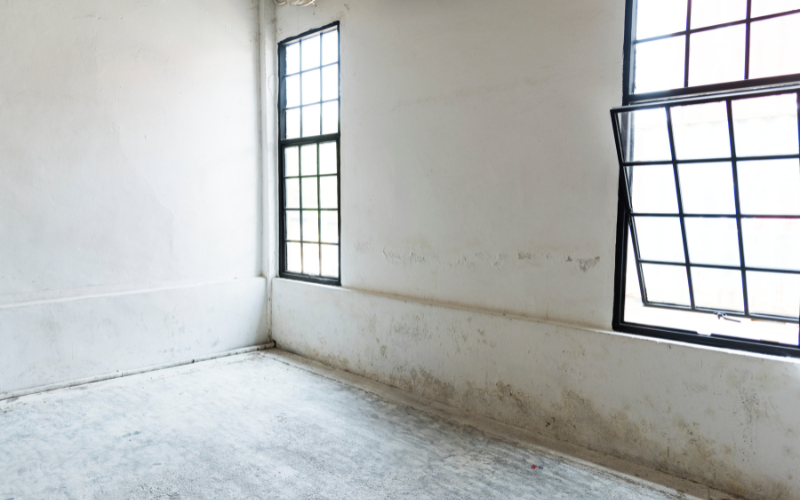
The Top 10 Most Polluted Countries in the World and How to Stay Safe While Traveling
Air pollution is a critical global issue, impacting millions of lives daily. For travelers, understanding the air quality of their destinations is crucial for health and safety. In this comprehensive guide, we'll explore the top 10 most polluted countries in the world, provide detailed tips on how to prepare for a trip to these areas, and discuss the benefits of wearing a face mask. Whether you're a frequent flyer or planning a one-time adventure, this guide will help you navigate through the haze of global air pollution.
Top 10 Most Air Polluted Countries in the World
1. Bangladesh
Bangladesh ranks as the most polluted country in the world, with alarmingly high levels of particulate matter (PM2.5). Dhaka, its capital, is particularly notorious for its severe air pollution, primarily due to vehicle emissions, industrial discharge, and rampant construction activities. The dense smog often blankets the city, causing significant health issues for its inhabitants.
2. Pakistan
Pakistan suffers from high pollution levels, with major cities like Lahore and Karachi experiencing extreme air quality issues. Factors contributing to the poor air quality include heavy traffic, industrial emissions, and the burning of agricultural waste. Seasonal changes, particularly in winter, exacerbate the situation as temperature inversions trap pollutants close to the ground.
3. India
India is home to some of the world's most polluted cities, including Delhi, Kanpur, and Varanasi. The primary sources of pollution are industrial emissions, vehicular exhaust, and agricultural practices like crop burning. During winter, the air quality deteriorates further due to weather conditions that trap pollutants.
4. Mongolia
Ulaanbaatar, the capital of Mongolia, faces critical air pollution levels, especially during the winter months. The widespread use of coal for heating and power generation is a significant contributor. The city's topography and climatic conditions also play a role in trapping pollutants, leading to hazardous air quality.
5. Afghanistan
Afghanistan's air pollution is severe, especially in urban areas like Kabul. The lack of infrastructure, combined with emissions from vehicles, industrial activities, and the open burning of waste, leads to poor air quality. The ongoing conflict has also disrupted efforts to improve environmental conditions.
6. Indonesia
Indonesia's air quality is compromised by frequent forest fires, vehicle emissions, and industrial activities. Major cities like Jakarta suffer from severe pollution, with smog becoming a common sight. The slash-and-burn agricultural practices, especially in Sumatra and Borneo, contribute significantly to the pollution levels.
7. Vietnam
Vietnam's rapid industrialization and urbanization have led to significant air pollution issues. Cities like Hanoi and Ho Chi Minh City are frequently enveloped in smog, caused by vehicle emissions, industrial discharge, and construction dust. Seasonal agricultural burning also contributes to the deteriorating air quality.
8. Thailand
Bangkok and other major cities in Thailand face pollution challenges from traffic congestion, industrial activities, and seasonal agricultural burning. The air quality can vary significantly, with certain times of the year, particularly during the burning season, seeing a sharp rise in pollution levels.
9. Myanmar
Myanmar's cities, especially Yangon, are experiencing increasing air pollution due to rapid urbanization and industrial activities. The lack of stringent environmental regulations and controls exacerbates the situation, leading to poor air quality.
10. China
Despite significant efforts and improvements in recent years, China still grapples with high pollution levels in many of its cities. Beijing and Shanghai frequently experience smog and haze caused by industrial emissions, vehicle exhaust, and coal burning. The Chinese government has implemented various measures to combat pollution, but challenges remain.
How to Prepare for a Trip to a Country with Poor Air Quality

Traveling to a country with high air pollution requires some extra preparation to ensure your health and safety. Here are detailed tips to help you get ready for your trip:
1. Check Air Quality Reports
Before you travel, regularly check air quality indexes (AQI) for your destination. Websites like AirVisual and apps like AQICN provide real-time updates on air pollution levels. Understanding the AQI can help you plan your activities and avoid high pollution periods. For example, an AQI under 50 is considered good, while levels above 300 are hazardous.
2. Pack an Air Pollution Mask
An air pollution mask is essential for traveling to polluted areas. Look for masks rated N95 or higher, as they can filter out a significant amount of particulate matter (PM2.5 and PM10). Reusable masks are also a good option, as they can provide sustained protection over a longer period. Ensure the mask fits well to provide effective filtration.
3. Stay Indoors During Peak Pollution Times
Plan your activities to avoid the outdoors during times of high pollution, usually during rush hours or early morning when traffic peaks. Staying indoors with air purifiers running can significantly reduce your exposure to harmful pollutants. If outdoor activities are unavoidable, try to limit your time outside and wear your air pollution mask.
4. Use Air Purifiers
Consider staying in accommodations that provide air purifiers, or bring a portable one if you have space. Clean indoor air can make a significant difference to your overall health during your stay. Air purifiers with HEPA filters are effective at removing fine particulate matter from the air.
5. Stay Hydrated and Eat Healthily
Drinking plenty of water and eating a diet rich in antioxidants can help your body combat the effects of air pollution. Foods high in vitamins C and E, omega-3 fatty acids, and other antioxidants can help reduce inflammation and improve your body's resilience to pollution.
6. Consult a Healthcare Provider
If you have pre-existing health conditions, especially respiratory or cardiovascular issues, consult your healthcare provider before traveling. They can provide specific advice and medications to help manage your condition in polluted environments.
The Benefits of Wearing a Face Mask When Traveling

1. Protects Respiratory Health
Face masks, particularly those rated N95 or higher, can filter out harmful particulate matter (PM2.5 and PM10), protecting your lungs from pollutants that can cause respiratory issues. This is crucial for preventing short-term problems like coughing and sore throat, as well as long-term health risks.
2. Reduces Exposure to Allergens and Pathogens
Masks also help in reducing exposure to allergens like pollen and pathogens that might be present in polluted air, decreasing the likelihood of respiratory infections. This is particularly important in densely populated areas where the risk of exposure to bacteria and viruses is higher.
3. Minimizes Long-term Health Risks
Long-term exposure to polluted air can lead to chronic health conditions such as asthma, bronchitis, and heart disease. Wearing a face mask can mitigate these risks by limiting your exposure. Consistent use of a high-quality mask can significantly reduce the amount of harmful pollutants you inhale.
4. Improves Overall Comfort
Breathing in polluted air can cause immediate discomfort such as coughing, sore throat, and eye irritation. A face mask can alleviate these symptoms, making your trip more comfortable. High-quality masks also come with features like adjustable straps and nose clips for a better fit and enhanced comfort.
5. Enhances Mental Peace
Knowing that you have taken steps to protect yourself can provide peace of mind. Traveling to a polluted area can be stressful, but wearing a mask and following other protective measures can help you feel more secure and focused on enjoying your trip.
Conclusion
Traveling to some of the most polluted countries in the world requires thoughtful preparation and awareness. By staying informed about air quality, packing the right gear like an air pollution mask, and taking preventive measures, you can ensure a safer and more enjoyable journey. Face masks are a simple yet effective tool in protecting against the harmful effects of air pollution. As global travelers, it's important to prioritize our health and adapt to the challenges posed by air quality issues. Safe travels!
Understanding and addressing the risks associated with air pollution can make a significant difference in your travel experience. With the right precautions, you can explore even the most polluted countries with confidence, ensuring your health and well-being are safeguarded. By following the tips provided and being proactive about your health, you can enjoy your adventures around the world without compromising your respiratory health. Remember, preparation is key, and with the right measures in place, you can turn even the most polluted destinations into memorable travel experiences.


